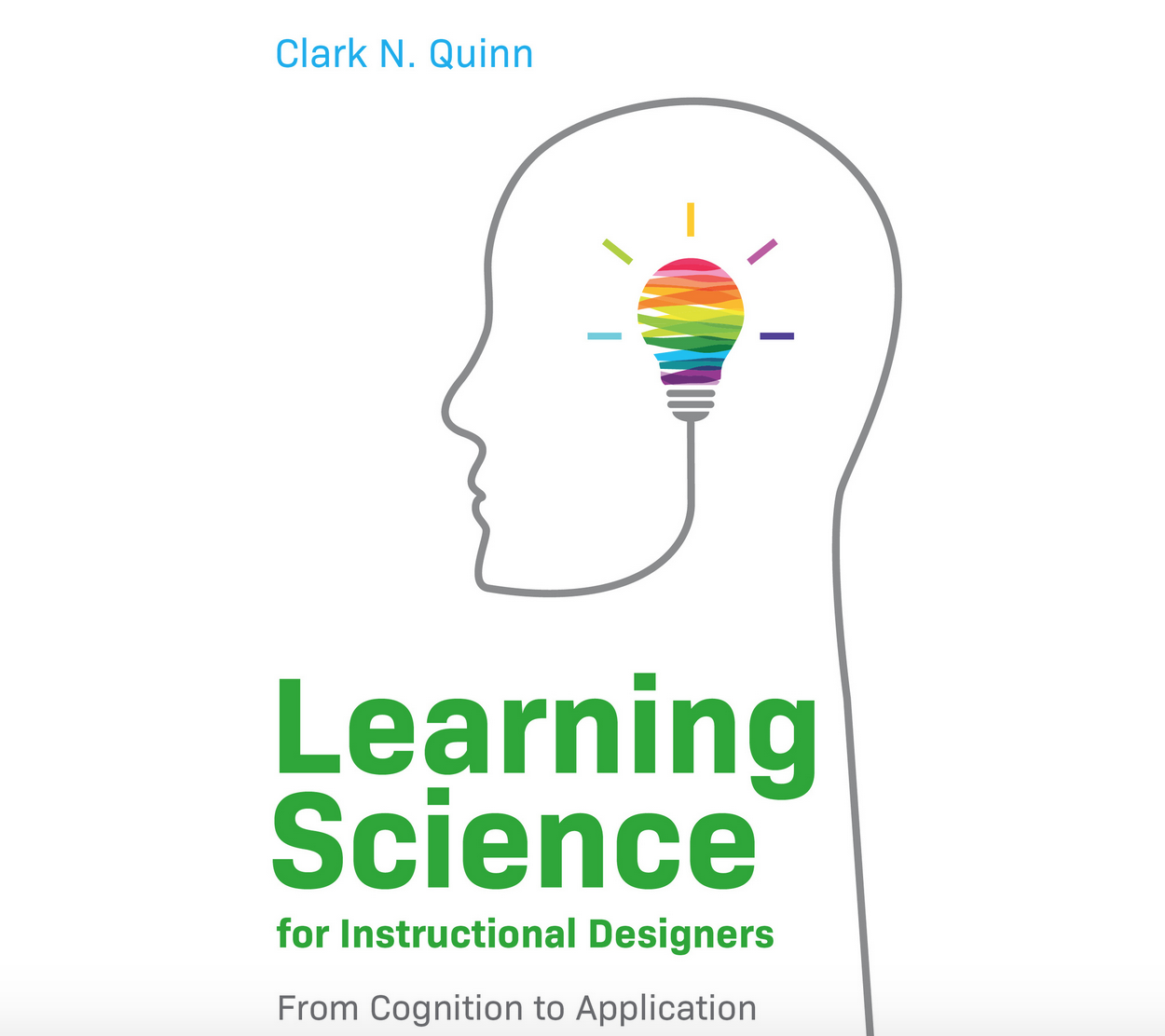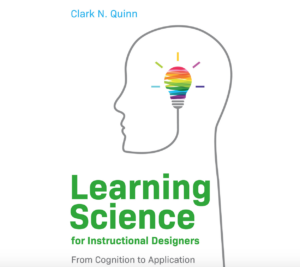
 Learning Science for Instructional Designers: From Cognition to Application is a wonderful synthesis of the learning sciences for those who would like to engage in purposeful reflection and make design choices in their practice. Clark Quinn takes the perspective that the professional educator is most effective when they have built an internal model of the learner. When they understand why they are making instructional choices, the educators can adjust material or practices to adapt to a variety of learners and the contexts.
Learning Science for Instructional Designers: From Cognition to Application is a wonderful synthesis of the learning sciences for those who would like to engage in purposeful reflection and make design choices in their practice. Clark Quinn takes the perspective that the professional educator is most effective when they have built an internal model of the learner. When they understand why they are making instructional choices, the educators can adjust material or practices to adapt to a variety of learners and the contexts.
Having the professional facility to rapidly adjust to changing circumstances has been highlighted in recent years as the context of teaching has been transient at best: in-person, online, hybrid, and the “new normal.” It is difficult to find a constant approach that will work, but the principles introduced here apply across circumstances. Remember, however, that the current situation is not unique; student populations, culture, content, and policy have always been in flux. Some have said this has been an opportunity to reimagine education. Moreover, without reflecting on practice, we have sometimes become complacent and have gone through the motions without considering or affecting the desired outcome. This book offers guides for this reimagining.
Educators entered the field because of an amazement with learning, and this book offers a refreshing lens with which to engage and adapt. Readers will be engaged with ideas of how to think about existing materials and a desire to exercise instructional creativity. But this book is not a set of instructions; Quinn does not take you by the hand and tell you what to do. Instead, he empowers you to make those creative leaps guided by principled reasoning from decades of scientific research. He asks what you will do with the compendium knowledge he has synthesized for you.
The book is loaded with great nuggets of information that bring one to pause throughout and consider implications of the well-presented ideas, covering topics from creating diagrams that minimize cognitive load, to learning through reinforcement schedules, and productively using collaboration for learning. He even offers basic scaffolds for the reader to hang these ideas on. Moreover, even though the book has been marketed for instructional design, the principles apply to learning in general, allowing the reader to consider their own habit formation, problem solving skills, personal motivation, and self-improvement. This makes the text not only professionally informative but also personally valuable.
The structure of the book also makes it a great book for the busy person who can only secure small free moments or even for those of us with an attention span to short to return to tomes of theory. Each section is concise and stands alone allowing the reader to engage in small bursts of interest. Additionally, for those that prefer reading with strategic use of visuals the text also has plenty of diagrams that scaffold and ground the ideas presented.
While written to be accessible to the novice, it is technical enough to be a useful reminder to the expert instructor or researcher who will also find some utility in the clear and concise writing style. I even found quite a few familiar ideas presented in new ways that inspired me to rethink old problems. Although this is not a theory laden book, Quinn brings the theory alive, not with overwhelming narratives, but through reflective questions at the end of each section that inspire and generate curiosity. I believe he will reinvigorate the sense of adventure and experimentation that led the educator to the field in the first place and can return us to a state of wide-eyed engagement with learning as a science.




